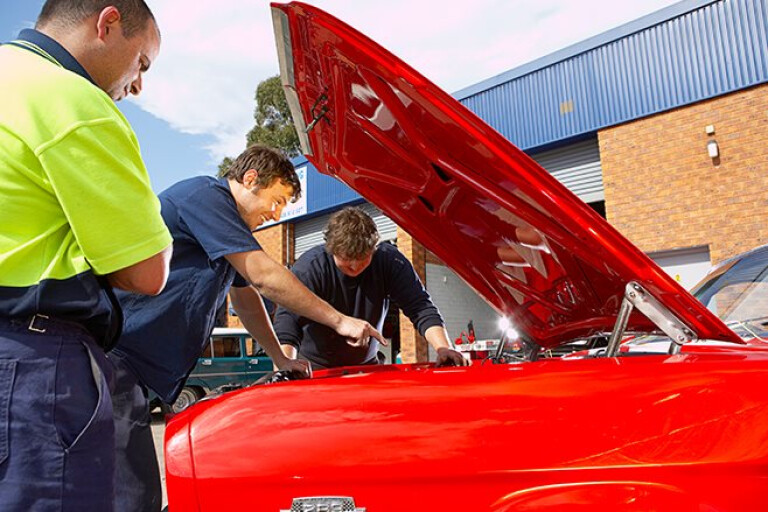
It is the first question when people get together and talk about their cars: what’s under the bonnet?
If the bonnet’s closed, that’s not such a bad question but how about those times when everything’s on show?
They say there’s no such thing as a stupid question but it’s still better to keep your mouth shut rather than blurting out: “Is that a 351?” when you’re looking at an HQ Monaro.
But even asking whether it’s a Holden or a Chev can relegate you to newbie status in the eyes of the owner — or your mates. No-one wants that but for people new to the sport it’s hard to ID engines that they stopped making as much as 40 years ago.
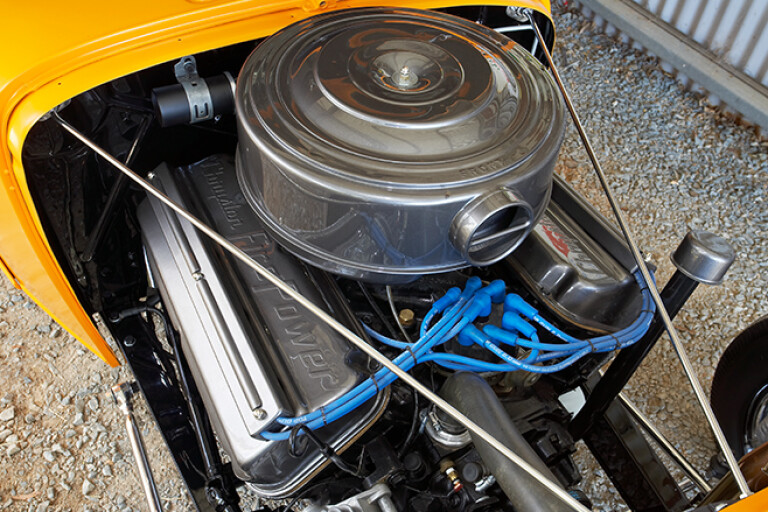
What’s wrong with this picture? Looks like a classic old-style Hemi but classic Hemis had the dizzy up the back. This is actually a Ford Cleveland dressed up
Luckily, with just these few simple tips we can help you identify the main engines at a glance, so you’ll become a legend among your mates at the next car show or cruise night.
The first tip is to know which engines generally belong in which cars. Learn the engine capacities as they relate to certain brands: if you’re talking Chevs then 327, 350, 427 and 454 are all numbers that should be imprinted into your consciousness. With a Ford, there’s a bloody good chance it’ll have a 302 or 351 between the shock towers. While there are people who mix brands, it’s very much the exception rather than the rule. People say stupid stuff because they don’t know any better and as the old saying goes, knowledge is power.
We don’t expect you to know about every engine that’s ever existed (we sure as hell don’t!) but pay attention and you’ll soon be able to identify Holdens, Chevs, Fords and Chryslers at a glance.
HOLDEN SIXES
Holden sixes come in four colours — grey, red, blue and black — but you can’t rely on the engines still being painted in their factory hue.

Most grey motors you come across won’t be painted factory grey any more. The easiest way to tell if that early Holden is still running a grey is to look for two bolts running through the top of the rocker cover. Greys also run a long one-piece sideplate (as shown) — red motors have two
Grey motors are easy to spot by the two bolts straight through the rocker cover, the long one-piece sideplate and the lack of an external oil pump.
The red six runs an external oil pump and the bolts holding the rocker cover run around the edge instead of going down through the middle. Identifying the capacity of a red motor is simple thanks to the ID plate cast into the passenger side of the block.
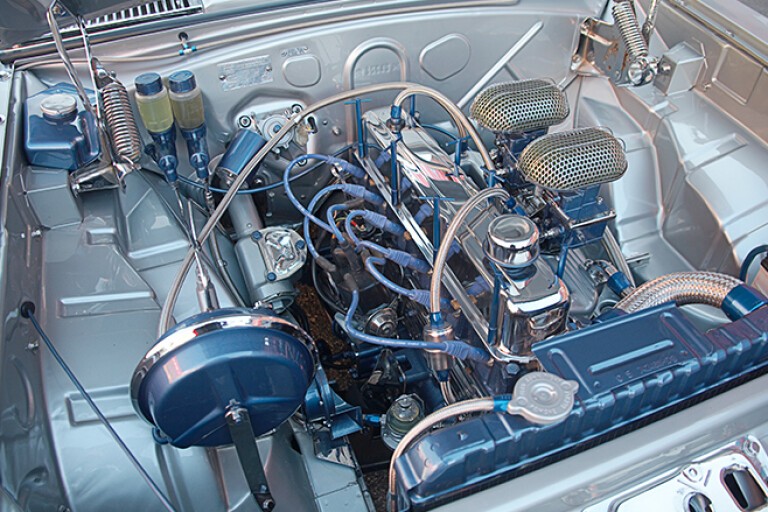
There are millions of red motor sixes out there, so you’re bound to run across one. Exhaust and intake are on one side, dizzy and oil pump on the other. Easiest way to ID the capacity is the big casting on the passenger side of the block which spells out the cubes
Blue and black motors look much like red motors but their capacities are in litres rather than cubes.
FORD SIXES
Ford sixes are pretty easy to identify. Early girls (144 and 170ci capacity) have three welsh plugs, while the 200ci six has five. The intake manifold is part of the head on all three.
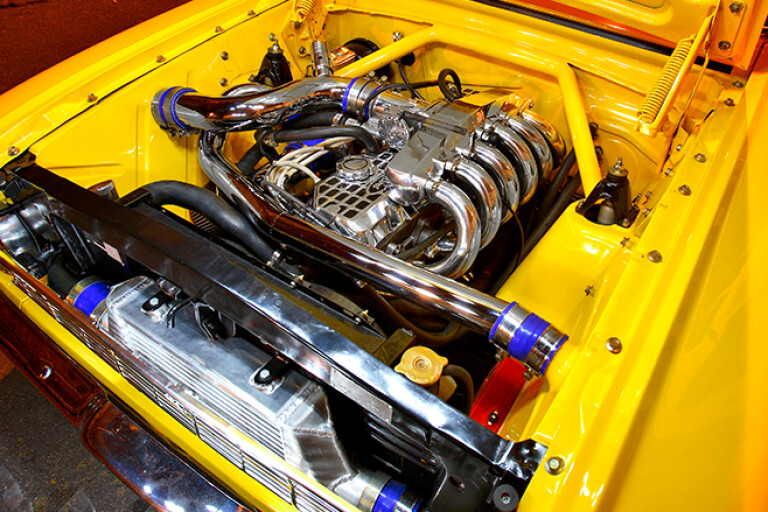
You don’t see a lot of Ford sixes modified these days but when you do they look spectacular. The wide cast-alloy rocker cover marks this as a factory injected 4.1-litre
The 250ci six (XY-XC) is wider and taller and uses a separate intake manifold. Of course, the size of an engine is hard to judge in the car but you can spot the 250 by its four-bolt water pump, instead of the three bolts on smaller donks.

The small-cube early Ford sixes are easy to spot, with the intake manifold integral to the head itself (as shown)
The later 4.1-litre crossflow can be identified by the crossflow head that positions the intake on the opposite side of the engine to the exhaust.
CHRYSLER SIXES
Chrysler sixes will mainly be either slant or Hemi. The slant-six is self-evident with the engine canted over 30 degree from vertical. This was done to lower the engine’s profile and allow lower bonnet lines. Hemi sixes stand up straight and look a lot like oversized Holden sixes — people have put them in Toranas dressed up as Holdens to fool the unwary.
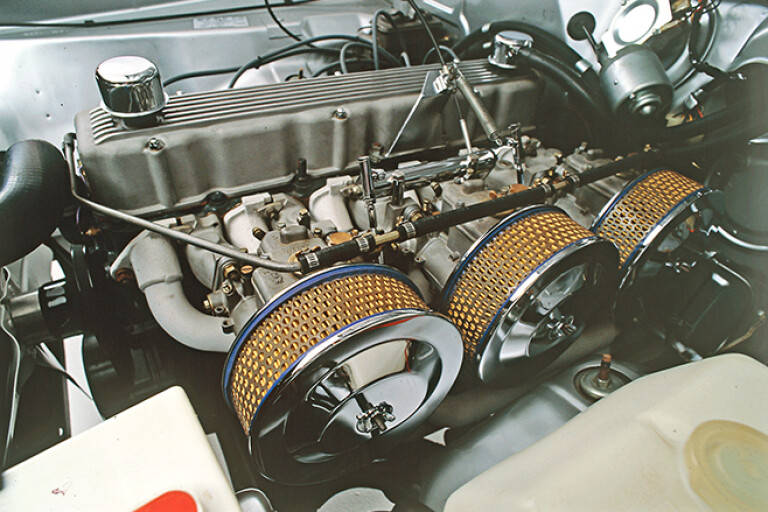
The Hemi six might look like an overgrown Holden donk but six separate intake runners and the lack of an external oil pump will help you spot it, if one has been slipped into a Torana or hot rod
The trick is that Hemi sixes don’t have external oil pumps, while their intake manifolds have six separate intake runners. Unlike the Holden six, the Hemi doesn’t have a big casting giving the capacity (a few do but they’re rare) but the engine number can help here. It’s located on the pad next to the dizzy — if the engine number starts with D1 it’s 215ci; D2 means it’s 245ci; D3 is the big-boy 265.
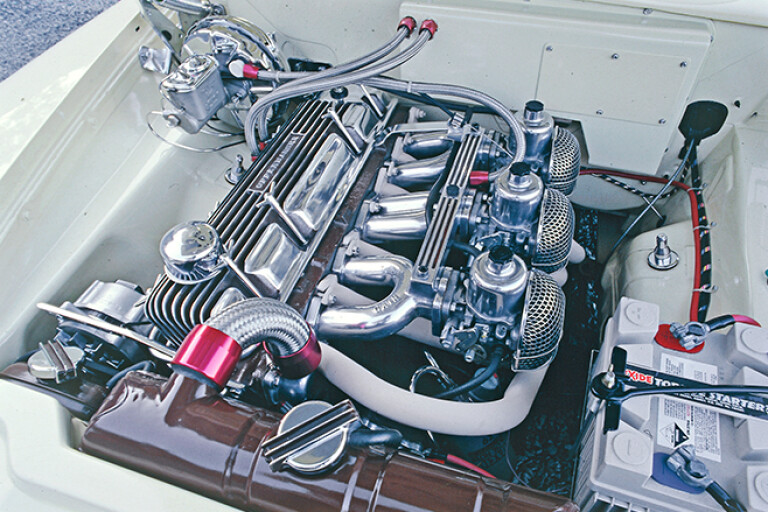
Even Ford and Holden fans can spot Chrysler’s Leaning Tower of Power without too much trouble — the engine’s canted 30 degrees from vertical. This example is beautifully dressed with go-fast goodies
CHEV SMALL-BLOCK
Moving on to the V8s, let’s start with the simple stuff, Chevrolet’s small-block engine. There are about 90 million of them out there in various forms. If it’s got a Chev badge up front, it’s a good bet there’ll be a small-block under the bonnet.
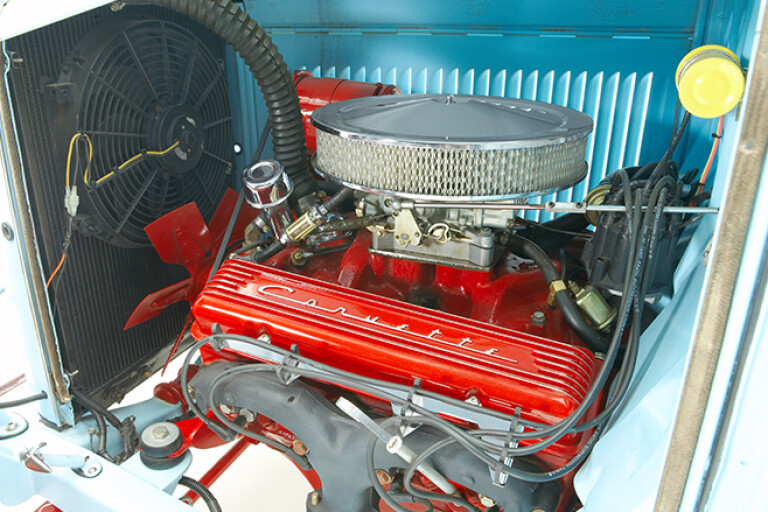
Identifying engines in hot rods is hard but some owners give you a hint, such as these Corvette rocker covers. Note the ‘ram’s horn’ exhaust manifold and the rectangular shape of the cover
If the distributor is at the back of the block and it has siamesed exhaust ports, that’s a good start. Of course, Holden and Chrysler distributors are also at the back but by looking at the rocker covers next you can divide them up. Chevy small-blocks generally use very rectangular rocker covers held down by just four bolts, and the engines are narrow across the intake manifold.

Blown small-block Chev in an HQ — easy to spot due to the siamesed exhaust ports (as shown), squared-off rocker covers and rear-mount dizzy
CHRYSLER SMALL-BLOCK
Chrysler throws a spanner in the works here because it runs the dizzy in the rear like the Chev, has siamesed exhaust ports and has somewhat boxy rocker covers too. How do you tell them apart? Well most Chrysler small-blocks have five bolts holding the covers down — two at the top and three on the bottom. Plus, the Chrysler rocker covers are slightly rounded front and rear. Although it doesn’t sound like a big difference, when you have a good look it’s like night and day.
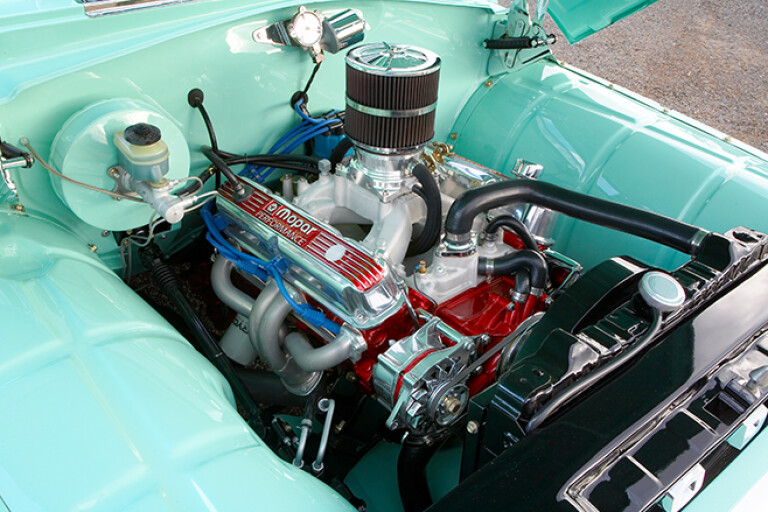
Beside the fact that almost every Chrysler small-block in the land wears Mopar Performance rocker covers, they’re easy to spot due to the softly rounded curves of the rocker covers’ sealing surface
FORD SMALL-BLOCK
Spotting Ford small-blocks is easy and hard at the same time. Having the distributor up the front gives you a 90 per cent chance of it being a Ford V8 (AMC and Chrysler big-block V8 dizzies are also up front) but Ford made Cleveland and Windsor small-blocks, which can be a trap for new players.

Once, you could spot a Clevo by the shape of the rocker cover but it’s harder these day with all the Ford Motorsport gear around. Top radiator hose is what you’re looking for; this one goes to the block, which makes it a Cleveland
Windsor V8s came first so if it’s an older Ford you’re looking at, there’s a good chance it’s a Windsor; the reverse works for newer Fords. On Cleveland V8s the thermostat housing mounts on the block in front of the manifold while the Windsor has the thermostat on the intake. Pretty simple really. There are other differences like rocker covers and so forth but the easiest way is to see where the top radiator hose goes.
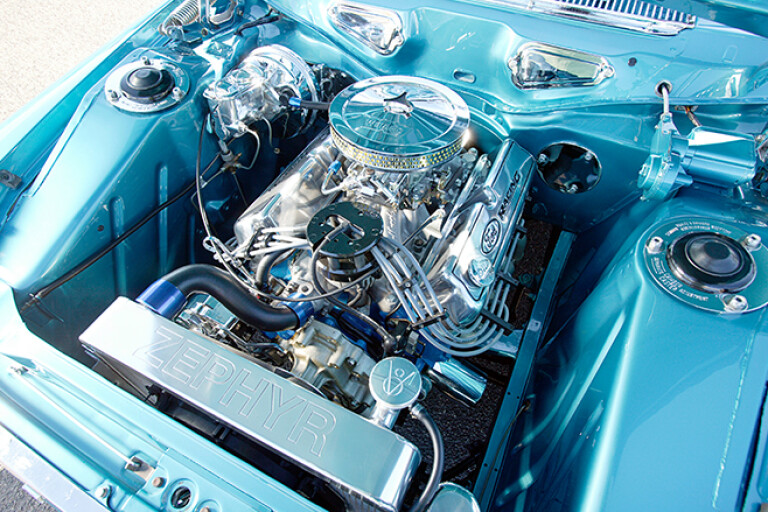
The top radiator hose going into the intake manifold marks this Ford donk as a Windsor straight away
None of this helps you spot the capacity but it would take a whole book to explain the tricks to help you split the exact models.
CHEV BIG-BLOCK
We'll start with the big-block Chev because it’s the easiest. As the name suggests, it’s a big motor but it’s the size and shape of the rocker covers that really give it away. Generally, the covers are about five inches wide and rectangular in shape, which keeps things simple.
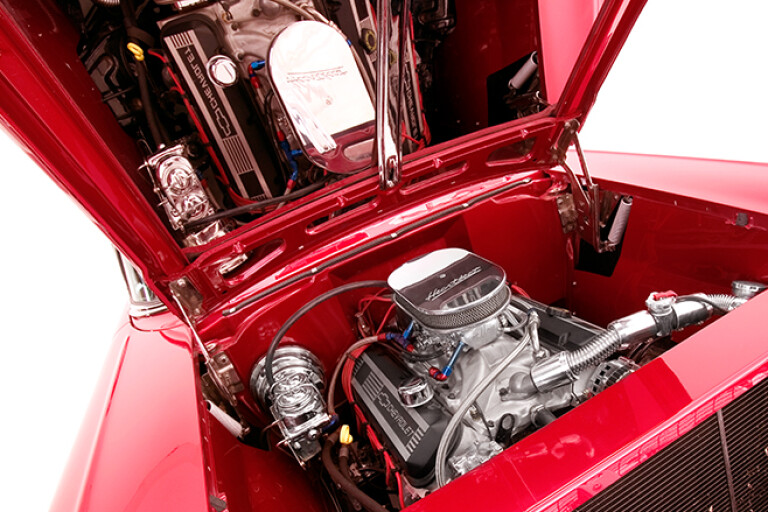
Everything about the Chevy big-block is big. It’s a spread-out donk and the rocker covers are as wide as a country road
HOLDEN V8
Holden's 308 V8 shares a lot of basic design traits, such as exhaust-port spacing and the rear-mounted distributor, with the small-block Chev but the front edge of the rocker covers gives it away.
Holden V8s mostly use rounded rocker covers and they are also much wider across the intake, even though they run a shorter deck height than the Chev. So Holdens are wide while Chevs are narrow and have boxy rocker covers.

Another easy way to tell a Holden V8 from a Chev is that the Holden has a bulky cast timing case cover (as shown)
CHRYSLER BIG-BLOCK
Chrysler made one big-block, the B engine, then the bigger RB model. The RB range includes the famous Hemi V8, on which the sparkplugs go through the rocker covers. The dizzy is up the back on the old 354/392 Hemis, while the newer 426 Hemi has it up front like the rest of the Chrysler big-blocks. The 413, 426 Wedge and 440 are all RB engines and can be identified by the big flat pad next to the distributor, where the engine details are stamped. Of these, the 440 is most common, so there’s a fair chance that if it’s in a street machine it’ll be a 440-cuber.

If you’re looking at a Chrysler big-block with a machined pad under the dizzy clamp, you’ve found yourself an RB. This one is a 440
This pad doesn’t exist on the smaller 383ci and 400ci B engines (confusingly, Chrysler also made a 383ci RB engine in the late 50s). These engines are popular strokers because they’re small, cheap and light but still yield big cubes.
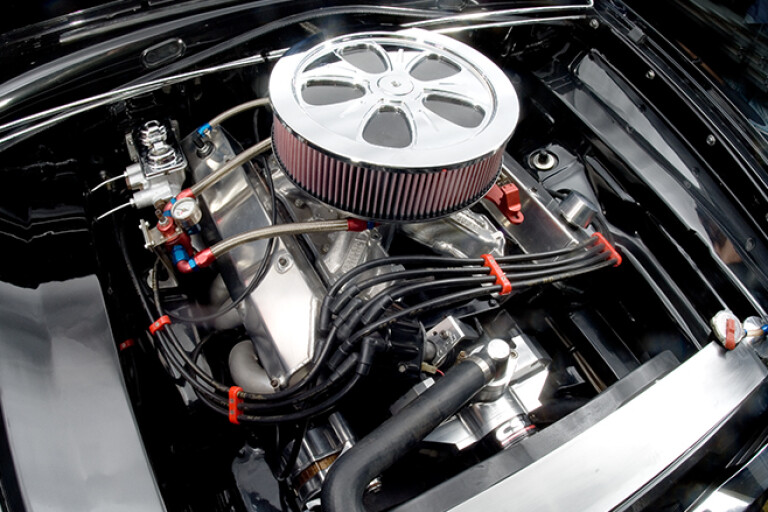
Angled front-mount dizzy but no sparkplugs through the rocker covers — this is a big-block Chrysler. But is it a B or an RB donk? RBs have machined pads to the right of the distributor hold-down clamp; this engine doesn’t, so it’s a B — a 383 in this case
FORD BIG-BLOCK
Like its small-block sibling, the big-block Ford features a distributor mounted up front. This can make things tricky, especially when you factor in the small-block Cleveland. They look very similar and while the big-block is much bigger, that doesn’t help unless you’ve got them side by side.

Not sure if you’ve got a Ford big-block or a Clevo on your hands? If the top radiator hose goes into the intake manifold, you’ve got a big-block. FE big-blocks like this one can be identified by the dizzy running down through the intake manifold
There are two things to look for: the top radiator hose (if it goes to the intake manifold it’s not a Clevo); and the distributor, which runs down through the intake manifold on the FE big-block (390, 427, 428) but not on the 385-series engines (429/460).
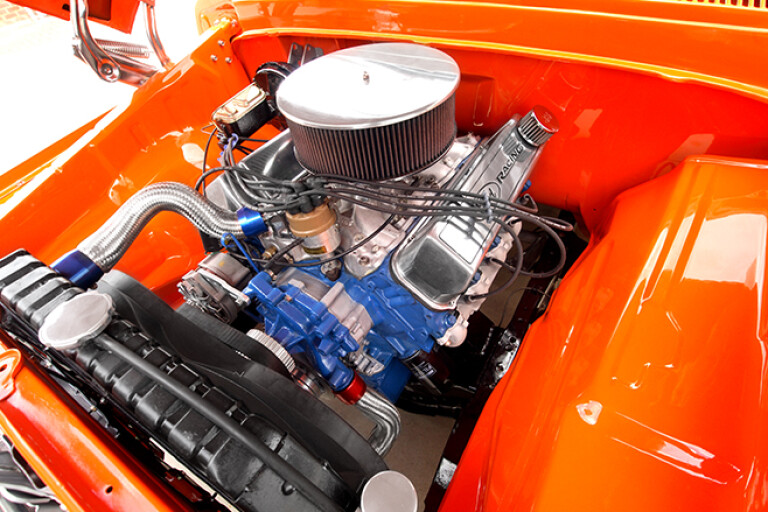
To spot the 429/460 big-block, look for the dizzy running through the block
WHAT’S A BIG-BLOCK?
How can Chevrolet make a 396ci big-block and 400ci small-block? The terms ‘big-block’ and ‘small-block’ relate to the varying deck heights of engines from the same manufacturer, rather than the cubic capacity.
Deck height is measured from the crankshaft centreline to the deck face of the block, where the head clamps in place. For big-blocks this is typically greater than 10 inches, though not always: the Chrysler small-block deck height is 9.600in while the 383ci B-engine is just a little bigger at 9.980in but is still considered a big-block. The RB block stretches out to 10.725 inches, which make it considerably bigger again.
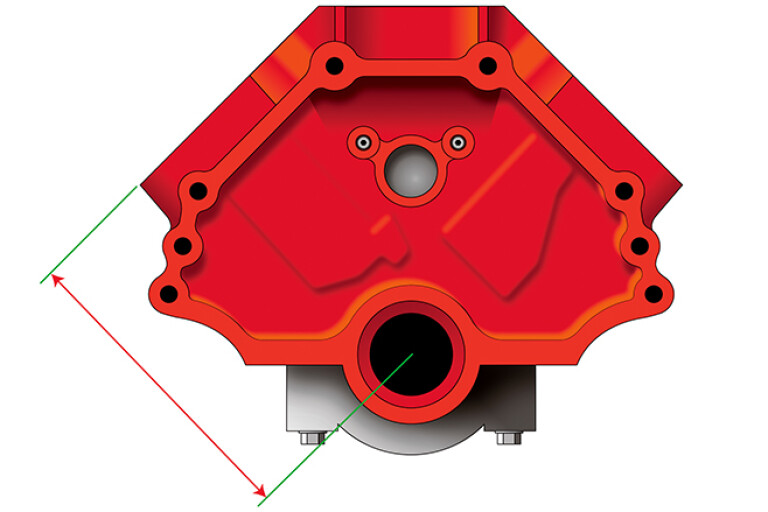
Some companies only made one engine size in terms of deck height (Holden, Pontiac, AMC) and so there aren’t small-blocks and big-blocks despite the sometimes large differences in capacity.



COMMENTS